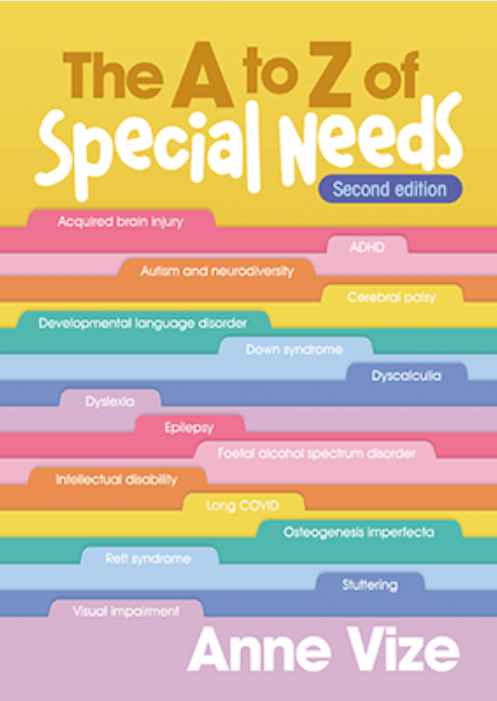Top 5 Questions Teachers Ask About Autism (And What Actually Helps)
- Anne Vize
- Aug 4
- 3 min read
Updated: Sep 15
If you’ve ever stood in front of a class thinking “I’m doing my best, but I don’t know what else to try” — you’re not alone. Teaching autistic students in mainstream or inclusive settings brings big rewards, but also complex challenges.
Let's explore the top five questions teachers ask about autism, drawn from real conversations in classrooms and professional learning sessions — along with practical, respectful strategies that build capacity and respect neurodiversity rather than focus on management and control.

1. "How do I respond when I don't understand the reason behind the behaviour?"
It can be tough when a student’s behaviour seems unexpected or doesn’t follow a pattern. All behaviour is communication, and it's important to think about the message which sits behind a student's actions and words.
Rather than seeing behaviour as something to manage, consider:
What is the student communicating if I stop and really listen and notice?
Could the environment be contributing — too loud, too bright, too crowded?
Is the task unclear, overwhelming, or disconnected from their strengths and interests?
Could this be anxiety, sensory discomfort, or social stress?
Support starts with observation, curiosity and collaboration. Plans and strategies can help, but so can simply noticing patterns and listening with intent.
For more ideas, see Inclusive Education - Autism by Anne Vize.
2. "How do I support a student with autism in a mainstream classroom when I can’t provide 1:1 support all day?"
This is a common concern — and completely valid in busy, under-resourced classrooms. The good news is that meaningful inclusion doesn’t depend on constant adult support.
What can make a difference:
Consistent routines and visual cues
Breaking tasks into clear, manageable steps
Providing quiet spaces or planned movement breaks
Making expectations visible and predictable
Offering multiple ways to engage with content and show understanding
Inclusion works best when the classroom is designed with all learners in mind — not when one student is separated by support.
3. "How do I talk to the rest of the class about autism?"
Teachers want to build an inclusive classroom culture, but are rightly cautious about privacy and respectful language. If a student is happy to share their diagnosis, or if the discussion is more general, it can be a great opportunity to build empathy.
Approaches that work:
Talk about brain diversity — how we all think and feel differently
Use simple, non-judgemental language: “Some people might find loud noise overwhelming,” or “Some students use pictures or devices to help them communicate”
Encourage questions, curiosity and kindness
Read books or watch videos that reflect neurodiverse experiences
Always check with families and students before sharing specific information.
4. "How do I support sensory needs in the classroom?"
Many students on the autism spectrum experience sensory differences that can affect how they learn and participate. These aren’t “issues” — they’re valid neurological differences that deserve thoughtful support.
You can help by:
Offering access to noise-reduction headphones or dimmer lighting
Allowing seating choices or movement during tasks
Using fabric or textured materials that feel comfortable
Creating a quiet corner or decompression space
Recognising that some activities (assemblies, group work, transitions) may need preparation or alternatives
What supports one student might not work for another — listening and adjusting is key.

5. "What’s the difference between a meltdown and a tantrum?"
This is one of the most frequently asked — and misunderstood — questions. It’s important to know that a meltdown is not a behavioural choice. It’s a sign that a student is overwhelmed and no longer able to regulate themselves.
During a meltdown, the student may shut down, become distressed, or find it difficult to communicate in a way you might understand easily. This is not the time for correction, reasoning, blaming or consequences.
What helps:
Creating a calm, safe space
Reducing sensory input
Offering non-verbal support (e.g., a familiar object, a visual reminder)
Giving time to recover without judgement or pressure
Prevention is always better than response — but when meltdowns happen, the focus should be on compassion, safety and recovery.
Looking for More Support?
If you’re after respectful, classroom-ready strategies grounded in inclusion and neurodiversity-affirming practice, have a look at these titles:
These books are designed for real classrooms — with visuals, planning tools and adjustments that build understanding and support students in authentic, practical ways.
Available through:
Essential Resources (Australia/NZ)
Outside the Box Learning Resources (Ireland/UK)
Just search for Anne Vize to see the full collection.
Got a question that’s not on the list? Let me know — it might just be the focus of the next post!




Comments